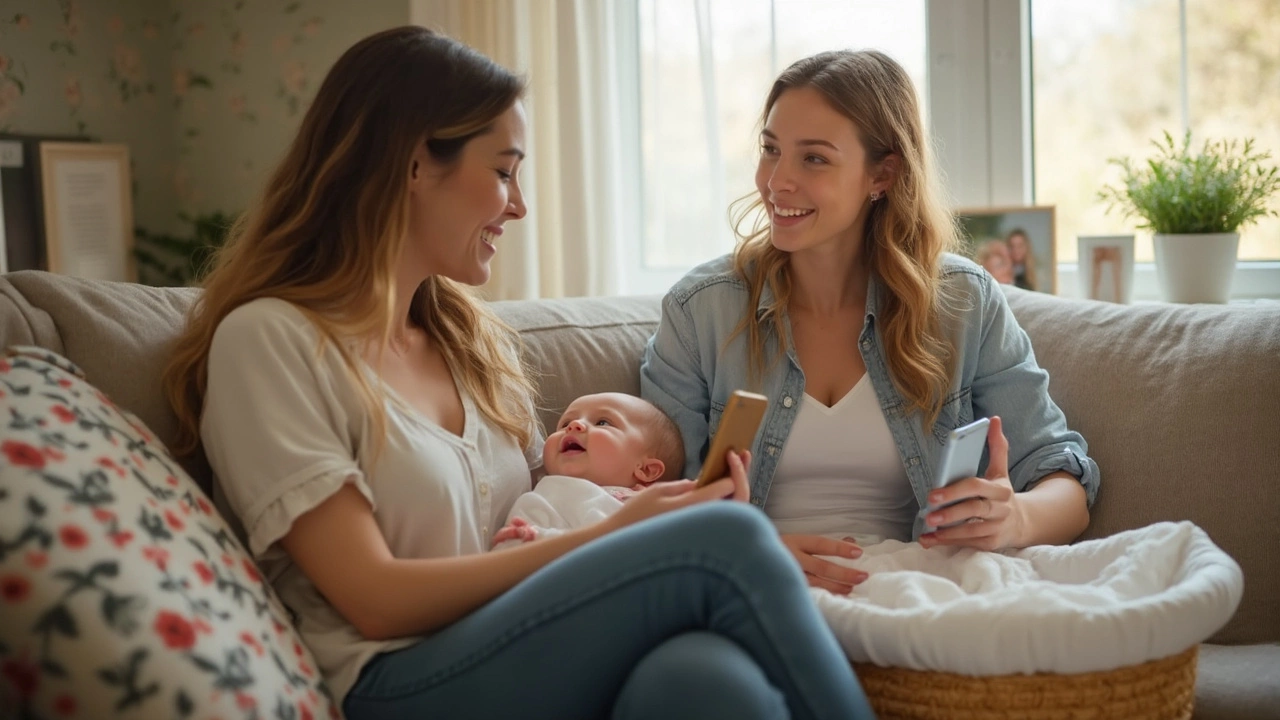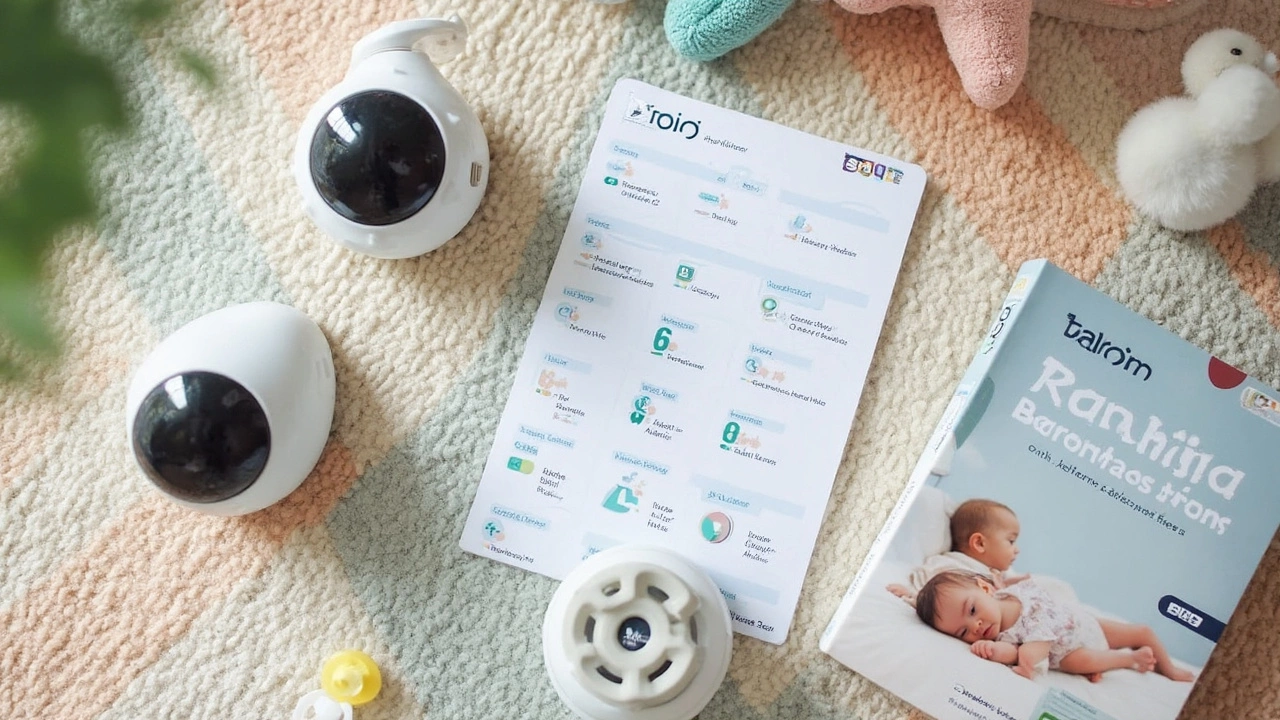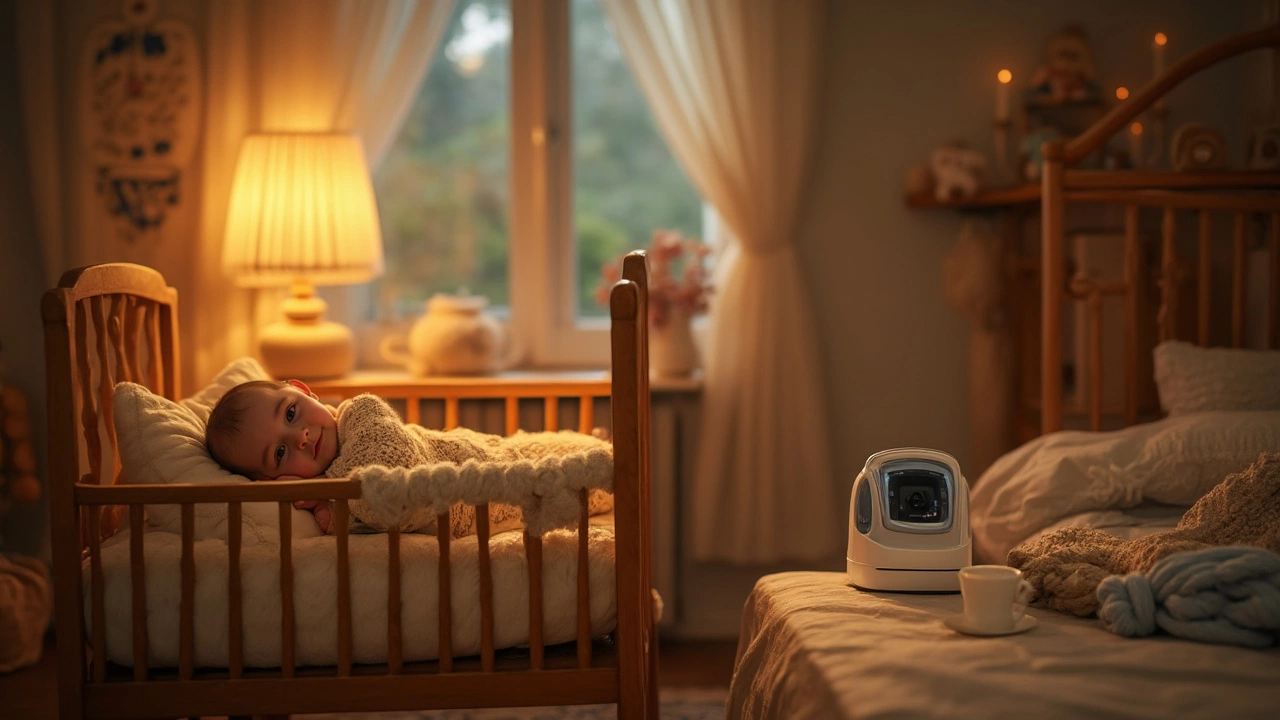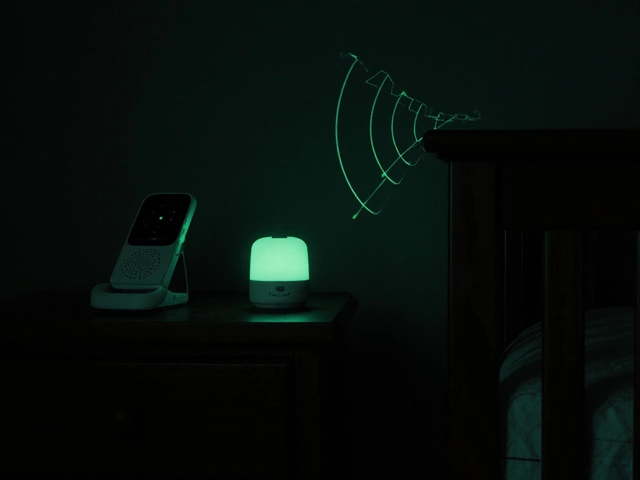Got a newborn and feeling stretched thin? You’re not alone if you find yourself checking—then double checking—your baby’s crib every five minutes. The fear of missing a hungry cry or any tiny shift in your little one’s breathing at night keeps plenty of new parents on edge. The idea of using a baby monitor might sound like the perfect fix. But here’s the real question: is using one for a brand-new baby the right move, or could it create more problems than it solves?
Why Parents Reach for a Baby Monitor—Even for Newborns
It seems like nearly every baby registry these days has a monitor listed. But why are parents, especially those with newborns, drawn to them in the first place? For starters, monitors feed that big need for peace of mind—especially in the first few months, when every breath or twitch feels like it’s loaded with meaning. Let’s face it, new parent nerves are real! Modern baby monitors do more these days than just transmit sound, too. Some video monitors let you check the nursery live from your phone, track room temperature, or even send alerts when your baby makes a move or cry. Others monitor breathing or oxygen, and there are literally models that will ping your phone if your baby’s chest stops moving for more than 20 seconds—talk about high-tech parenting.
But the draw goes beyond the cool factor. Monitors help parents who want to catch some shut-eye themselves. When you’re running on nearly zero sleep and feeling like a character from The Walking Dead, knowing you have a second set of "eyes" looking out for your baby feels huge. You also get the roommate angle: for parents who can’t or don’t want to room-share for months, a monitor bridges that gap nicely. So, it’s no surprise monitors for newborns seem like a parenting must-have.
There’s another group who swears by them: parents with anxiety or a history of pregnancy loss. For these families, a monitor is less about sleep and more about sanity. The ability to peek at your child—even if you never actually need a monitor alert—soothes some really big worries. Parents with large homes say a monitor saves them endless trips across the house, and those with multiple floors or with the baby sleeping far from their own room find monitors essential. Especially now, when multigenerational households are common, a monitor helps parents and caregivers share duties without constantly hovering over the crib.
The Science (And Skepticism) Behind Baby Monitors for Newborns
So, do the experts say using a baby monitor for a newborn is smart or unnecessary? Here’s where it gets interesting. You might expect pediatricians to urge everyone to get the fanciest baby monitors on the market—after all, anything that keeps a child safe sounds good. But the reality is a bit more nuanced. And there’s some debate over just how useful most monitors are, especially for healthy, term newborns.
The American Academy of Pediatrics (AAP) doesn’t recommend relying on home baby monitors—especially ones that claim to prevent sudden infant death syndrome (SIDS). Their main concern? Many monitors, including those that monitor breathing or oxygen, haven’t been proven to prevent SIDS according to what researchers know so far. In one well-cited study, breathing and oxygen monitors triggered “false alarms” that stressed parents out way more than they helped. Plus, monitor makers aren’t required to prove their devices work like medical-grade equipment. That means you might wind up losing sleep from beeping monitors, rather than the baby!
Sound monitors are another story. These are basically a walkie-talkie for your nursery, and they’re not marketed as medical devices. They’re a tool for house logistics, not health claims. Pediatricians are fine with parents using sound or basic video monitors as long as parents don’t let them take the place of safe sleep practices, regular check-ins, or human instincts. There’s no shortcut: basics like putting your baby on their back, having a firm sleep surface, and keeping the crib free of loose bedding matter way more than any monitor.
There’s also that curveball—monitor dependency. A few studies noticed that some parents, especially sleep-deprived ones, start to obsess over every little sound or movement on screen. Others, though, find themselves tuning out constant chatter from monitors, especially overnight. So, monitors can either calm you or feed your worries, depending on your personality and the kind of monitor you pick. Knowing yourself is half the battle here.

Baby Monitor Safety—What Parents Need to Watch Out For
Time for the nitty-gritty: using a baby monitor around a newborn is supposed to be for safety and peace of mind, right? But let’s talk through a reality that sometimes gets buried in store displays and marketing. Baby monitors can introduce their own risks if you’re not careful.
The first thing people forget—monitors need power cords, receivers, or cameras. Cords anywhere near a crib are bad news. Babies grow—and scoot—faster than you’d think, so even a cord that seems far from reach one day can entice little hands soon after. It’s nothing to ignore. So, take a walk around your nursery: every wire and plug must be out of sight, out of reach, and never draped on or inside the crib. The Consumer Product Safety Commission points to a few rare but real strangulation incidents linked to poorly placed monitor cords, which is not the kind of thing any parent wants on their mind at 2 AM.
There’s another thing: privacy. A lot of modern monitors work through Wi-Fi or smartphones. This sounds slick, but there have been several high-profile stories where hackers logged in to monitors and talked to kids or spied on families. The fix? Always change the default password, use secure Wi-Fi, and check your device’s security settings—you don’t want the internet peeping in on your baby’s nap.
Don’t forget about EMF (electromagnetic field) worrywarts. Some parents are nervous about the effects of radiofrequency waves from monitors placed too close to a baby’s head. While the limited research hasn’t shown big dangers, it makes sense to keep monitors away from the crib just in case. You get the same clear sound and video—even from a few feet away—and stop yourself from sweating over invisible tech signals.
Allergies and cords seem obvious, but don’t forget batteries. If your monitor uses them, swap them out regularly and check for leaks or damage. Some monitors require SD cards for video, and thousands of parents have accidentally left small parts lying around after installation. While these are easy mistakes, even minor hazards aren’t worth the risk. A quick safety sweep fixes most issues before they become a story to tell at the next parent group meeting.
Tips for Getting the Most Out of Your Baby Monitor (Without Losing Sleep)
If you’ve decided to go for a monitor—maybe you’re craving a bit more sleep or need to catch up on chores across the house—here are a few things to help you use it wisely instead of worrying yourself silly. First, pick the right monitor for your space and your stress level. Some parents prefer old-school audio-only monitors since there’s less chance of obsessing over video. If you’re going high-tech, make sure your Wi-Fi network is password-protected and pick a monitor from a brand with real support and frequent software updates. Knock-off brands are everywhere, but customer support is worth its weight in gold if you hit any hiccups.
Placement is key, too. The baby monitor should be on a stable shelf or mounted to the wall (using included clips—never DIY zip ties), at least three feet from the crib. Point the camera or microphone at the baby’s sleeping area, but make sure cords can’t dangle or tempt a curious hand. Tuck extra cords behind furniture or use cord concealers to hide them entirely.
Keep the volume at a comfortable level. Cranking it all the way up can lead to stress over every grunt or whimper—babies are loud sleepers, and not every noise needs a response. Some monitors have customizable alerts or sensitivity dials; try starting low and slowly increasing if you find yourself missing important cries. Consider setting “quiet hours,” so you only get alerts at specific times or after certain levels of noise. This cuts down on false alarms and makes it easier to relax (or, hey, even watch a whole episode of your favorite show from the next room).
Take time to “check out”—literally. Don’t sit glued to the screen all day. If you have another adult at home, trade off monitor duties. Listen for bigger patterns rather than every sigh. If you’ve got a wearable monitor, don’t feel guilty about turning it off once in a while. The purpose isn’t to make you more tense—it’s to support your peace.
If you ever wonder if you’re using the monitor too much, check your own habits. Do you feel calmer or more worried? Some parents put their monitors on “night mode” just for sleep stretches, shutting them down in daylight when they’re more present. Others use a volume-only setting at night so they don’t jump up for every single cough or coo. There’s no single answer, but checking in with yourself is as important as checking on your baby.

What Real Parents Say—Monitors, Myths, and Finding Your Balance
The real scoop comes from parents in the trenches. Ask a group of new moms and dads, and you’ll see just how divided folks are on baby monitors. Some consider them so indispensable they pack a travel version for visits to relatives. Others, especially parents who grew up without such gadgets, sometimes share stories of monitor-induced paranoia: “I ran every time the white noise shifted!”
One popular parent tip: don’t be afraid to ditch the monitor if it turns your nerves up instead of down. Many parents start out with audio plus video, then move to sound-only, or use the monitor only during early months. By six months, some stow the monitor away because their ears adjust—they can reliably hear any real distress (or creative crib escaping) from the next room. Other parents, dealing with big houses or lots of family bustle, keep the monitor into toddlerhood and say it’s a sanity-saver during naps.
Parents who love high-tech monitors mention they’re most useful for catching real needs—like finding out if the baby’s making regular feeding cues, or spotting a simple diaper issue before it turns into a full-blown meltdown. But don’t confuse a monitor alert with a medical checkup. A monitor is a tool—it doesn’t replace a parent’s gut instincts or your pediatrician. Some parents report their favorite feature is “talkback”—the option to soothe a baby through the monitor speaker, which helps in that “almost asleep but not quite” phase. Others never use the bells and whistles and are happiest with a reliable, simple setup.
Ultimately, the takeaway from real families? Every situation is different. Your baby, your personality, your living space—they all mix and create a unique answer for you. The only universal truth: don’t feel pressured by anyone else’s setup. If a monitor helps you feel safe and sane, use it. If it keeps you on edge, take a break or put it away. Parenting a newborn is hard enough—sometimes, the best tools are the ones that help you relax, not add more to your plate.


